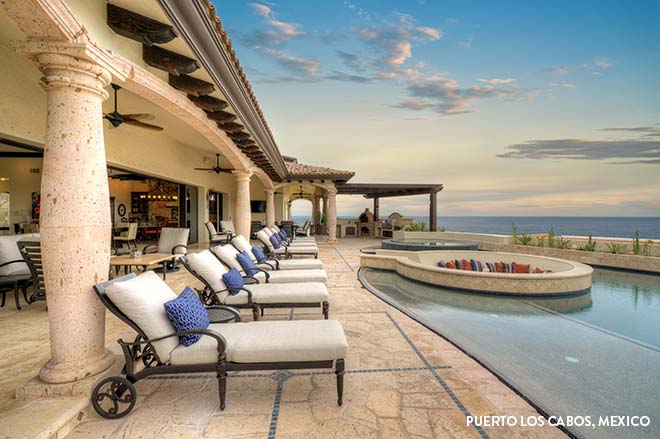Have you come across the fractional ownership or co-ownership investment model in your search? Fractionals have gained a lot of attention in recent years. While fractionals might seem like a viable solution for some families, investors with Equity Estates have been enjoying the benefits of our unique model and ownership structure for more than fifteen years.
3 Differences between Equity Estates and Fractionals
To start, let’s compare how Equity Estates greatly differs from a fractional model.
1. Variety of places to vacation
With Equity Estates, our investors have access to travel to all of the residences throughout our entire portfolio, not just a single home. Portfolio access means that our investors enjoy dozens of residences in more than 25 different countries across the globe. In comparison, traditional fractional ownership method owners will have a part ownership share in one specific residence, which means that their vacations will be limited to this one residence. Some fractionals claim access to other homes, but users will often find availability limited to off-season dates.
2. A clear path to liquidity
Another key difference is Equity Estates funds have a predefined divestment timeframe, which means there is a very clear and defined path to liquidity from the beginning of the investment. Our funds typically have a life of around 10 years before we start to liquidate and sell the homes, returning investors first their initial investment, and then 80% of the profits thereafter. For fractional owners, when/if they decide to sell their investment, there is no guarantee when the sale will happen or how long it will take. It could be a competitive landscape depending on how many fractional owners want to liquidate at a given time. Finding a specific buyer who might enjoy your specific weeks may take time.
3. Investment value
The investment value can also differ greatly between these models. Equity Estates focuses on $2 to $5 million dollar homes in top performing luxury vacation markets. Historically these assets have performed quite well. Conversely, fractionals have not historically been the best investment with limited liquidity options as well as a much smaller market and buying audience.
Similarities between Equity Estates and Fractionals
Now, let’s compare some of the ways fractional ownership is similar to Equity Estates.
No-stress maintenance
When compared to second home ownership, both fractional ownership and an investment with Equity Estates offer a way to enjoy a residence without the stress and responsibilities of dealing with maintenance issues. In both models, maintenance costs are shared, creating less financial and emotional burden to the owners.
Allocated annual nights
Equity Estates and fractional ownership models also have annual night allocations. Unlike a private residence, ownership is shared, and advance bookings and annual nightly allocations keep access equitable amongst owners.
Cost savings on overhead
Unless they are within a short drive of your primary residence, we’ve found that most vacation homes only get used a few weeks out of the year. Both Equity Estates and fractionals facilitate sharing the overhead cost of maintaining a home along with taxes and insurance. It’s a smart financial choice to keep your dollars working for you.
Learn more about Equity Estates
Overall, our investment model is very different than fractional ownership. When evaluating which option is the best for you or your family, it’s important to consider your current travel habits and investment goals.
Are you interested in learning more about our investment model? Fund V is currently open, and now is a great time to connect with a member of our Investor Relations team to learn why so many of our Fund I investors are already re-investing with Fund V.
Schedule time to connect with our team to download our Fund V Investment Overview.



